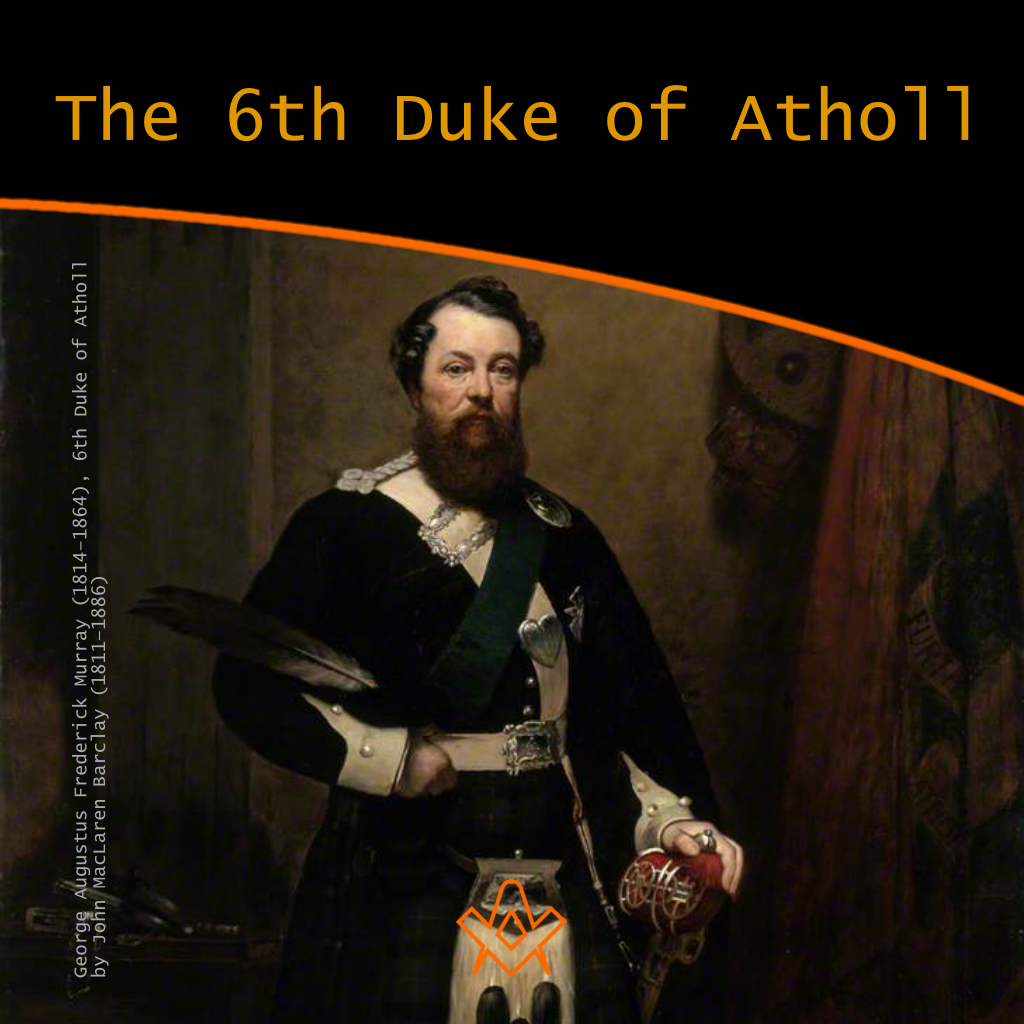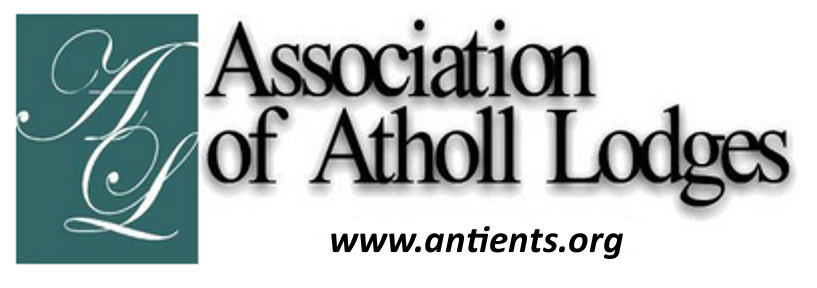The 6th Duke of Atholl – Chieftain, Grand Master, and a Memorial to Remember.
In 1865, why did over 500 Scottish Freemasons climb a hill in Perthshire carrying working tools, corn, oil and wine?
On 16 January 1864, the 6th Duke of Atholl, Grand Master Mason of Scotland, passed away at his ancestral home at Blair Castle, Blair Atholl, Perthshire.
The following year, family, friends, and tenants, decided that a good way to cherish his memory would be to erect a memorial to him at Logierait in Perthshire, and busily set about gathering subscribers to the enterprise.
The Memorial was duly completed, and the crumbling edifice still stands proudly today, shrouded by trees atop a hill overlooking the Vale of Atholl.
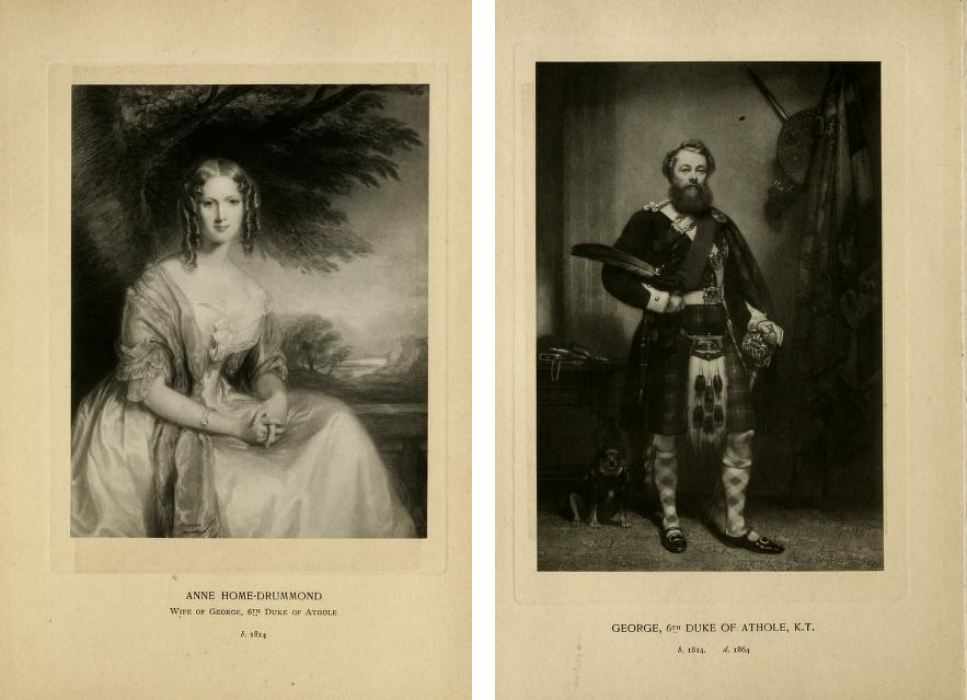
Left: Anne Murray (nee Home-Drummond), Duchess of Atholl (1814-1897)
Right: George, 6th Duke of Atholl (1814-1864)
IMAGE LINKED: archive.org – Chronicles of the Atholl and Tullibardine Families by Atholl, John, 7th Duke, Vol. IV, pp. 449-450, Ballatyne Press, Edinburgh, 1908. (CC BY-NC-SA 2.5 Scotland) via 4.0 International (CC BY 4.0)
It is not the purpose here to detail the involvement of the various Dukes of Atholl in Scottish Freemasonry over the years, but it is perhaps necessary to relate some details of the 6th Duke’s Masonic career.
George Augustus Frederick John Murray, was born on 20 September, 1814, and succeeded his father James Murray as Baron Glenlyon in 1837, and his uncle John, the 5th Duke of Atholl in 1846.
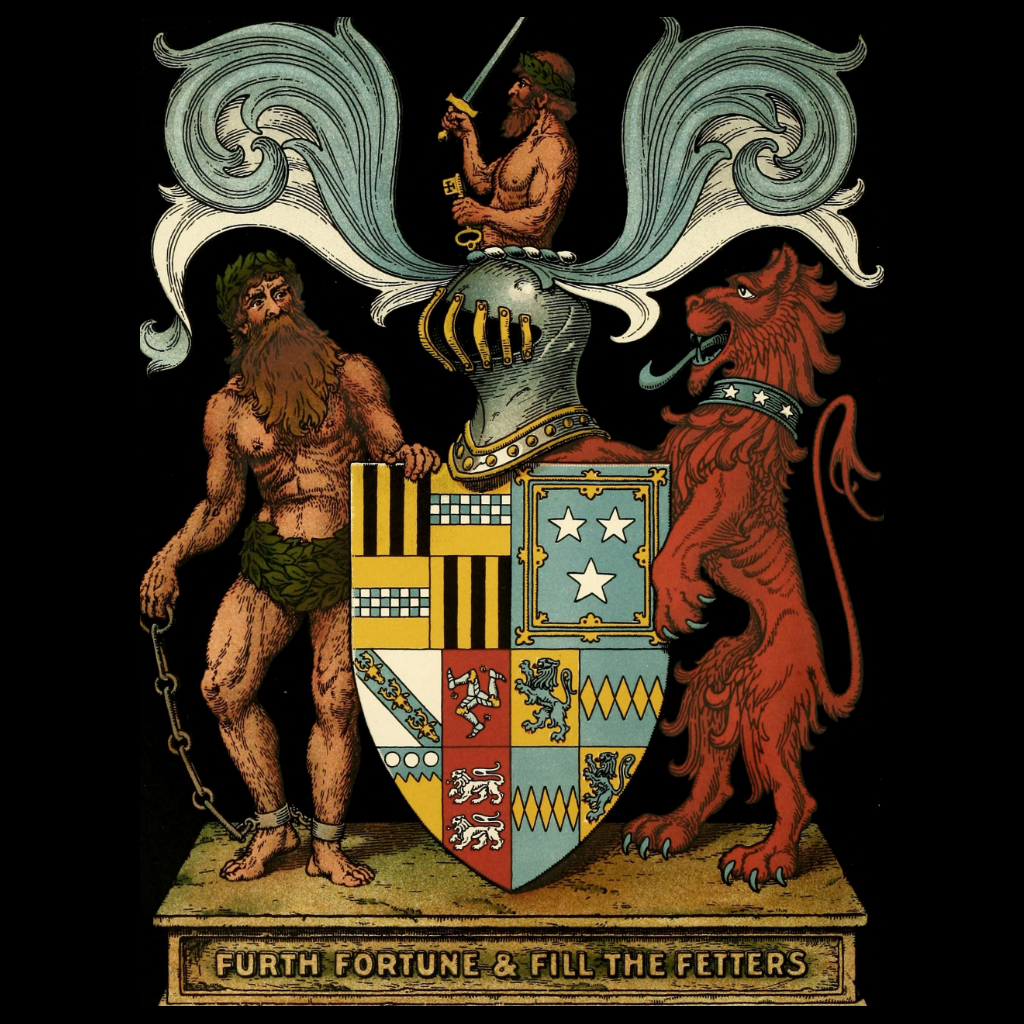
Murray Heraldry By Internet Archive Book Images –
IMAGE LINKED: wikimedia Attribution 4.0 International (CC BY 4.0)
He was initiated into the Scottish Craft in Lodge St. John No. 14, Dunkeld, in November 1841 (now the United Lodge of Dunkeld No. 14).
He was appointed to the position of Deputy Grand Master in the same year, holding that position for two years, before being elected the 66th Grand Master in November, 1843, retaining the post until his untimely death in 1864.
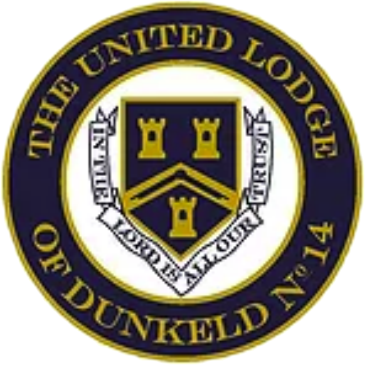
Emblem of The United Lodge of Dunkeld No. 14 –
Image copyright of the Lodge
It was in 1865, that the project to build a lasting Memorial to the Duke got under way, and the subscribers chose to erect it on a hill overlooking the village of Logierait and the wider Vale of Atholl.
The memorial was to take the form of a Celtic cross and cost £1500.00; a considerable sum of money in those days.
As befits a former Grand Master, the foundation-stone for the memorial was to be laid by the Grand Lodge of Scotland, with the new Grand Master, Brother John Whyte-Melville presiding over the ceremony.
Grand Lodge would be supported by large deputations of Freemasons from provinces throughout Scotland.
On 17 June 1865, the memorial management committee wrote to the Grand Secretary of the Grand Lodge of Scotland, Brother W.A. Laurie Esq., stating:
At a meeting held at Logierait on the 10 July, this committee of management for erecting the monument to the late Duke of Atholl considered that the most suitable time for all the parties for laying the foundation stone of the monument at Logierait with Masonic honours would be about the 10 August, and I have been desired by the Earl of Mansfield, the chairman of the committee, to ascertain if this time would be agreeable to the Grand Master and the Grand Lodge.
May I therefore request that you will have the kindness to inform me if Thursday the 10 August will suit Mr Whyte-Melville, and upon hearing from you the necessary arrangements will be made.
Begging the favour of your reply as soon as may be convenient.
A notice dated 24 July, 1865 declared the following:
Memorial to the late Duke of Atholl
Notice to the subscribers
The committee of management beg to intimate that the foundation stone of the monument will be laid by the Grand Lodge of Scotland on Thursday, 10 August next.
The procession will be formed at Logierait Schoolhouse, near Ballinluig Station at 11 o’clock on that day after the arrival of the trains from the South.
Confirmation of the proposed itinerary was also communicated to the Earl of Mansfield, in a letter dated 26 July, 1865; sent to his London address:
I am just favoured with your lordship’s letter of yesterday’s date.
I have been intending for some days to write your lordship as to the arrangement for laying the foundation stone of the monument at Logierait on 10 August, but have delayed, expecting to receive information from the Grand Lodge as to the deputations and numbers that might be expected to be present, but I have not yet got all the required information from Mr Laurie.
A circular has been sent from the Grand Lodge to the Lodge of Perthshire and Forfarshire, and also to Glasgow, inviting their attendance, and I have put an advertisement in the Perth papers, the North British Advertiser, the Scotsman, and also in a Glasgow paper, intimating to subscribers that the foundation stone is to be laid by the Grand Lodge on the 10 August.
It is proposed that the procession should be formed at the new schoolhouse at Ballinluig after the arrival of the south trains (say about 1 o’clock) and that it should proceed across the river by the railway bridges (which will be granted by the company) to the site of the memorial.
The foundation stone would probably be laid about noon, and the procession would then return to the school house, where a lunch will be given by the Duchess Dowager, to the Grand Lodge and deputations and the memorial committee, and at which it is hoped your lordship will preside.
The band of the Perthshire Rifles will attend. The trains will arrive at Ballinluig from the south at 10.19, and parties can return either at 2.44 or 5.53. The duchess’s carriage will be at Ballinluig Station to take your lordship and the Grand Master to the school house…
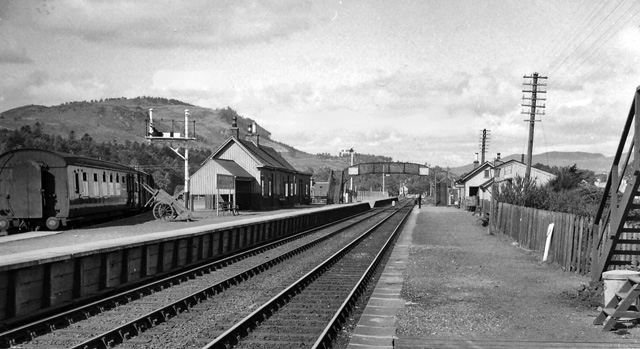
Ballinluig Station © Ben Brooksbank –
IMAGE LINKED: geograph.org.uk/p/1747129 Attribution International (CC BY 2.0)
On the day of the event, The Highland Railway ran a special train to Ballinluig, full to brimming with a large number of guests and Masonic brethren from all over Scotland.
The Perthshire Journal and Constitutional newspaper of Thursday, 17 August 1865, wrote extensively about the event and reported that it was dampened by heavy showers of rain, although it would appear that the spirits of those attending remained upbeat.
The site chosen for the memorial was Tom Na Croiche hill [aka Gallows Knoll or Rath of Logierait], on which an ancient castle is reputed to have once stood, but of which there is no longer any trace.
The hill is of modest indeterminate height; the present writer has scaled it, and found that although steps have been built to accommodate the climb up, the endeavour can still break sweat and quicken the pulse.
It must have been a strain for older attendees of the event, some of whom would have had the additional encumbrance of Masonic regalia and paraphernalia.
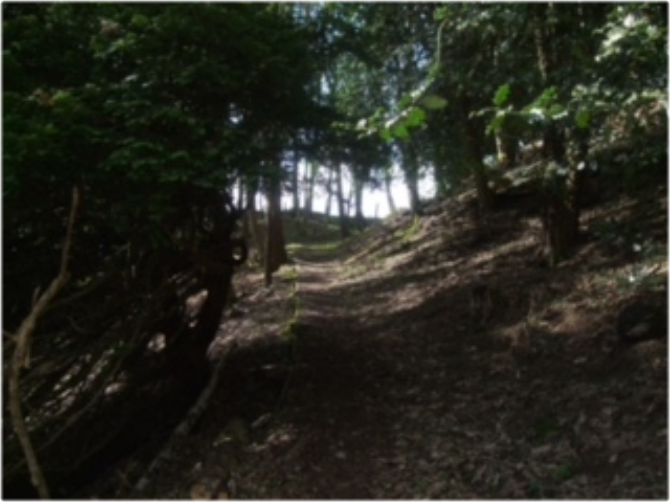
Image supplied by the author
Prior to the foot procession from Ballinluig, a number of bystanders passed the time by either obtaining lodgings, or visiting some of the local sites, which included the ‘chain-wrought’ floating platform which operated as a ferry, and which crossed back and forth on the nearby river Tummel.
However, the greatest attraction was a shed in which the assembled Masonic brethren were given their instructions by the Grand Marshall.
The procession formed up, and was led from Ballinluig over the railway bridge to the foot of Tom Na Croiche hill, preceded by the band of the Royal Perthshire Militia, and four of the Duke’s Pipers, playing the ‘Atholl March’.
The procession is said to have been a half mile long. The Perthshire Journal & Constitutional reported:
On arriving at the opening leading to the stone, the procession halted, the brethren opened to the right and left, so as to leave room for the Grand Master and office-bearers to pass up the centre. The Grand Master and office-bearers of the Lodges passed under the crossbars in the usual form, and the whole of the brethren fell in as it came to their turn.
A large number of Grand Lodge officers and Masonic brethren then made the climb up to the memorial site, some of them carrying the ceremonial wine, corn and oil to be used in the course of the stone-laying.
The Perthshire Journal & Constitutional continued:
The Working Tools of the Grand Lodge were carried by 12 members of the Journeyman Lodge (Lodge of Journeymen Masons No. 8, Edinburgh), the famous ‘Blue Blanket’ being carried by Brother Andrew Kerr (Note: -The ‘Blue Blanket’ is an ancient Craft Banner which has only been carried by this Lodge on four occasions at various foundation stone-laying ceremonies over the years).
The total number of persons attending the ceremony that day was about 1500- 564 of them being Freemasons.
The local paper also reported the following list of Lodges in attendance at the event, along with the number of brethren representing each; in order of seniority:
Edinburgh Mary’s Chapel – 8
3. Scone and Perth – 70
5. Canongate and Leith -14
8. Edinburgh Journeymen – 25
9. Dunblane – 3
10, Dalkeith Kilwinning – 4
14, St. John, Dunkeld – 30
21. Old St. John, Lanark – 6
40. St. Thomas, Arbroath – 7
46. St. John, Auchterarder – 8
47. Operative, Dundee – 7
48. Ancient, Dundee – 20
50. St. John Inverary – 3
60. St. John, Inverkeithing – 3
66. St. Ninian, Brechin -7
72. St. John, Kirkcaldy – 34
74. St. Andrew, Perth – 23
78. St. David, Dundee – 16
85. Kirknewton and Ratho – 13
90. Forfar Kilwinning – 14
105. St. John Operative, Coupar Angus -10
106. Lindores, Newburgh – 3
121. St. Cyre, Auchtermuchty – 6
122. Royal Arch, Perth – 12
134. Robertsons, Cromarty – 6
151. Edinburgh Defensive Band – 7
152. Operative, Dunkeld – 25
158. Thistle Operative, Dundee – 5
160. Roman Eagle, Edinburgh – 4
204. St. Paul’s, Ayr – 4
223. Trafalgar, Leith – 6
225. Forfar and Kincardine, Dundee – 5
254. Caledonian, Dundee – 3
291. Celtic, Edinburgh -6
299. Panmure, Arbroath – 20
309. Lour, Forfar – 20
317. Camperdown, Dundee – 10
333. St. George, Glasgow – 3
339. St. Mary, Caledonian Operative, Inverness – 9
349. St. Clare, Edinburgh – 6
384, Athole, Kirkintilloch – 3
392, Caledonian, Edinburgh – 9
400. Dunearn, Burntisland – 25
408. Clyde, Glasgow – 5
419. Neptune, Glasgow – 3.
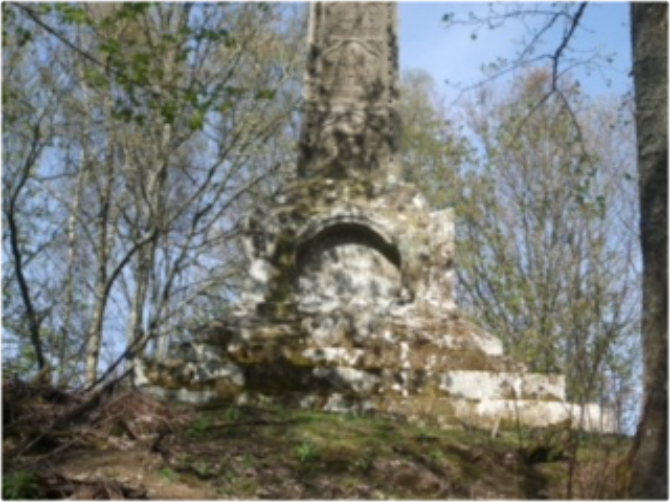
Image The Atholl Memorial © Kenneth Jack
The newspaper further commented:
The stone was placed on a pedestal some six feet in height and ten or twelve feet square, and was supported by four guys.
The following was the order given in the programme in which the parties took up their positions on the platform.
The Architect is the first of the Masonic procession who walks up to the Platform on the East; 2dly, the Chaplain; 3dly the Grand Jeweller; Grand Deacons; Grand Clerk, Grand Secretary, Grand Treasurer, Grand Wardens and Substitute; then Grand Master, Past Grand Master, and Deputy Grand Master, followed by Provincial Grand Masters and Brethren attendant, all giving way to the Grand Master when on the platform, and the Substitute taking the right of the Grand Master.
Immediately after the officers of the Grand Lodge had taken their places; the Rev. Mr. Wilson of Dunkeld offered up an appropriate prayer.
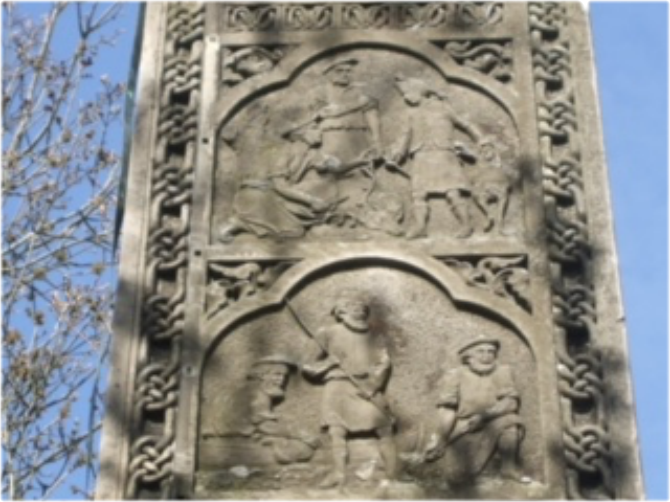
Image: The Atholl Memorial © Kenneth Jack
The Architect having brought forward the necessary workmen, the Grand Secretary placed a bottle containing a number of newspapers, coins etc. in the cavity below the stone. Among these articles was a plate bearing the following inscription: –
THE FOUNDATION STONE OF THIS MONUMENT
In Memory, of
HIS GRACE, GEORGE AUGUSTUS FREDERICK JOHN,
SIXTH DUKE OF ATHOLE K.T.
Most Worshipful Grand Master Mason of Scotland,
Erected by
Numerous Friends and Admirers of his benevolent and
Manly character
Was laid by
JOHN WHYTE-MELVILLE ESQ. OF BENNOCHY
AND STRATHKINESS
Most Worshipful Grand Master Mason of Scotland,
Assisted by
The Office Bearers of the Grand Lodge,
And by numerous Daughter lodges
On the
Tenth day of August, in the year of our Lord MDCCCLXV,
And of
Light IOODCCLXIX.
The stone was then lowered with the usual Masonic ceremony, the plumb being applied by J.G.W. Dr Middleton, the level by S.G.W. Dr McCowan and the square by Sir Alex G. Maitland.
The Grand Master gave three knocks, and the wine and oil were poured on the stone by the Wardens, and the Grand Master then pronounced the Masonic blessing.
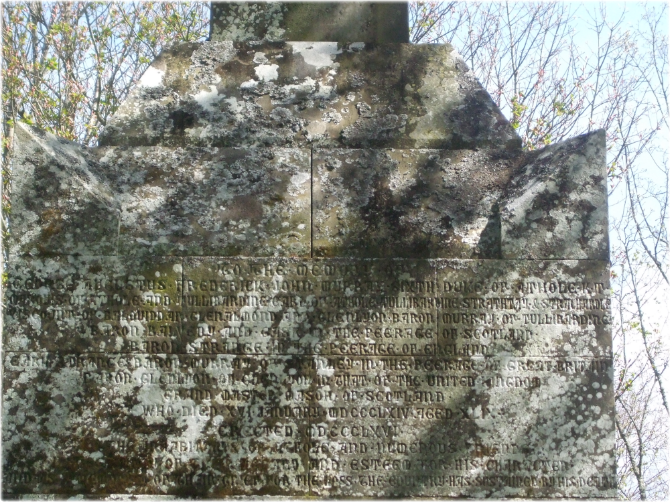
The Atholl Memorial © Kenneth Jack
The Grand Master then addressed the assembled throng and stated that having attended many stone-laying ceremonies with the late Grand Master, it was of course a sad duty in having to carry out the ceremony for his late friend and brother Freemason; and whilst acknowledging that there were those who thought the memorial unnecessary, told of his great pleasure in being asked to do so.
He also thanked and paid tribute to those Freemasons who had travelled great distances – particularly in those days, to attend the event, stating:
To the brethren present, I beg to tender my thanks for their assistance and co-operation.
Many of them have come from far to do honour to the late Grand Master, and one Lodge I feel called on to refer to specially, which has come as far as from a distant point of Cromarty.
To the deputation of that Lodge, I beg to tender my most sincere thanks. I don’t know if it is on my right or on my left, but I beg to thank it.
At all events, I am very thankful to the large deputations that have come forward to assist me on this occasion to the number, I understand, of deputations from 40 Lodges.
The Grand Master then intimated that Her Grace, The Duchess Dowager of Atholl would host a luncheon for the Masonic brethren in the local school house, and those for whom there was no room in the school house, they would be catered for in a shed.
The Grand Master then wound up the ceremony by stating:
I will conclude by praying the Great Architect of the Universe to permit this monument to the Duke of Athole, one all so truly loved, to be finished and erected without hurt or detriment to any of those engaged in its construction.
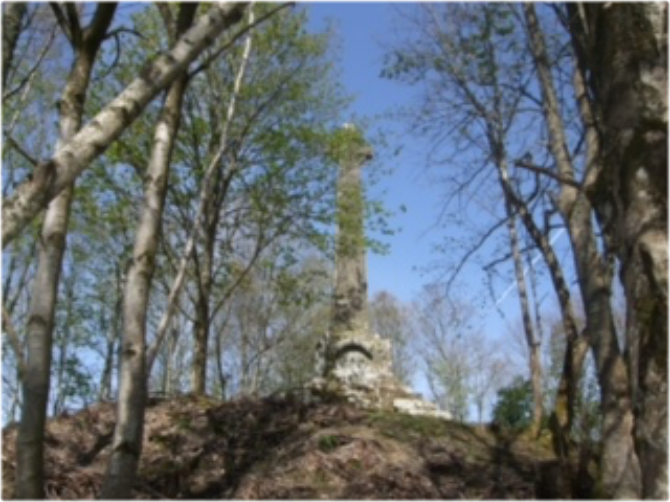
Image: The Atholl Memorial © Kenneth Jack
The procession thereafter returned to the school house where the luncheon was enjoyed by around 350 persons; and various toasts and speeches were made.
This part of the day’s events was chaired by the Earl of Mansfield, supported by the Grand Master and various other dignitaries.
The Earl proposed a toast to the Grand Master Mason stating:
I must now ask you to drink to a health which I am sure you will receive with enthusiasm, it is that of ‘The Right Worshipful Grand Master Mason of Scotland’.
I had the honour of stating to him at the close of the ceremony today, how much we, the subscribers to this memorial, and also the inhabitants of this district in general, were indebted to him and the Grand Lodge and all the Masons for their kindness in coming here and assisting in laying the foundation stone.
I know it has been done at much personal inconvenience of many of you.
I know there may be prejudices and feelings against Masonry existing in the minds of some, but I believe there are few who would have been satisfied had the foundation-stone of this memorial been laid in a common-place manner, without the forms and ceremony which the presence of the Masonic body impart to it.
It is true I may be prejudiced the other way myself, being a Mason, but as I am here answering not for myself only, but for the Duchess Dowager of Athole, and for the other lady-subscribers who cannot possibly be suspected to be Masons, I am sure that they, as well as many of the subscribers in this district, feel deeply indebted to you for your presence here today.
There is a manner in which certain duties have to be discharged, and I appeal to every one of you whether I am not correct in stating that, contrasted with other occasions of a similar nature to this, the duties have been fulfilled in a very able, and discreet, and sensible manner indeed.
The Grand Master Whyte-Melville replied:
Lord Mansfield and gentlemen, I beg to express to you in the warmest manner of which it is possible for words to convey, my sense of the very kind way in which his lordship has proposed the toast of my name, and for the especially kind manner in which you have received it.
I beg to assure Lord Mansfield that if, in his estimation, my duties were appropriately performed, I feel quite satisfied.
As Masons, we all do our duty to the best of our ability, and those who are not initiated can’t know anything about the matter.
The Grand Master then proposed a toast to the Earl of Mansfield, before the event came to a conclusion, with all parties departing to their respective parts of the country.
The memorial was subsequently built to a design by noted Edinburgh Architect Robert Rowand Anderson (1834 – 1921).
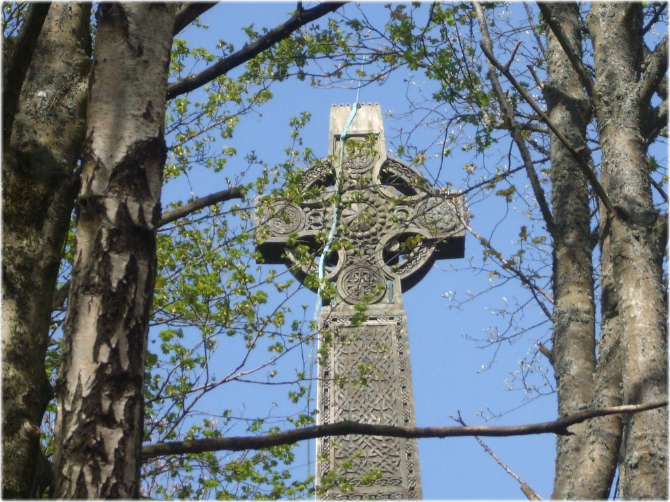
Image: The Atholl Memorial © Kenneth Jack
Blair Castle, situated only a few miles from Logierait, the family seat of the Dukes of Atholl, is now a magnet for tourists from around the globe.
The castle holds a large amount of Masonic regalia and memorabilia relating to the Masonic activities of the various Dukes. However, it is doubtful whether any of the tourists are aware of the memorial to the 6th Duke, which, despite its age and many years of neglect, is still an impressive edifice.
The monument stands today, not only as a tribute to the 6th Duke of Atholl, but perhaps also as a relic from a bygone age, when nobility was regarded with awe and reverence, foundation stones were laid with Masonic pomp and circumstance; and Grand Lodge came to Logierait.
Footnotes
Resources
Martin, Bro. George M, F.S.A. (Scot), P.M. Lodge Dundee St. Mary No. 1149 –
‘The Athole Family and Freemasonry’
Watson, Bro. Ian P, PM, ‘The History of the Blue Blanket’
Blair Castle Archives, N.R.A.S 234, Bundle 1534.
Perthshire Journal & Constitutional Newspaper
Article by: Kenneth C. Jack
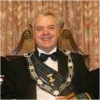
Kenneth C. Jack FPS is an enthusiastic Masonic researcher/writer from Highland Perthshire in Scotland.
He is Past Master of a Craft Lodge, Past First Principal of a Royal Arch Chapter, Past Most-Wise Sovereign of a Sovereign Chapter of Princes Rose Croix.
He has been extensively published in various Masonic periodicals throughout the world including: The Ashlar, The Square, The Scottish Rite Journal, Masonic Magazine, Philalethes Journal, and the annual transactions of various Masonic bodies.
Kenneth is a Fellow of the Philalethes Society, a highly prestigious Masonic research body based in the USA.
The Association of Atholl Lodges
The Association was formed to encourage Atholl Lodges, and anyone with a connection to or interest in those lodges, to join together in celebrating and preserving our Atholl heritage.
We seek to foster and promote fraternal links amongst our members by:
• encouraging inter-visiting
• supporting Atholl celebrations
• arranging special events
• giving talks
• providing information about Atholl matters via our website
• newsletters and other publications.
Full membership is open to:
• Atholl lodges
• associate membership to UGLE recognised lodges with Atholl links
• affiliate membership to other recognised lodges or individuals with an interest in Atholl history
Recent Articles: Kenneth C. Jack
 Observations on the History of Masonic Research Archaeology is often associated with uncovering ancient tombs and fossilized remains, but it goes beyond that. In a Masonic context, archaeology can be used to study and analyze the material culture of Freemasonry, providing insight into its history and development. This article will explore the emergence and evolution of Masonic research, shedding light on the challenges faced by this ancient society in the modern world. |
 Anthony O'Neal Haye – Freemason, Poet, Author and Magus Discover the untold story of Anthony O’Neal Haye, a revered Scottish Freemason and Poet Laureate of Lodge Canongate Kilwinning No. 2 in Edinburgh. Beyond his Masonic achievements, Haye was a prolific author, delving deep into the history of the Knights Templar and leaving an indelible mark on Scottish Freemasonry. Dive into the life of a man who, despite his humble beginnings, rose to prominence in both Masonic and literary circles, leaving a legacy that continues to inspire. |
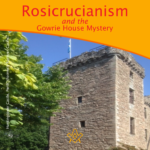 Rosicrucianism and the Gowrie House Mystery Unearth the mystifying intersections of Rosicrucianism and the infamous Gowrie House Mystery. Dive into speculative claims of sacred knowledge, royal theft, and a Masonic conspiracy, harking back to a fateful day in 1600. As we delve into this enthralling enigma, we challenge everything you thought you knew about this historical thriller. A paper by Kenneth Jack |
 Thomas Telford's Masonic Bridge of Dunkeld Of course, there is no such thing as a ‘Masonic Bridge’; but if any bridge is deserving of such an epithet, then the Bridge of Dunkeld is surely it. Designed by Scotsman Thomas Telford, one of the most famous Freemasons in history. |
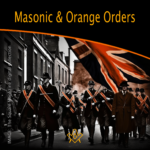 The masonic and orange orders: fraternal twins or public misperception? “Who’s the Mason in the black?” |
 Kenneth Jack's research reveals James Murray, 2nd Duke of Atholl – the 'lost Grand Master' |
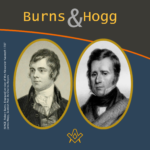 An Oration delivered to the Annual Burns and Hogg Festival, at Lodge Canongate Kilwinning, No. 2, Edinburgh, on 24 January 2018. By Bro. Kenneth C. Jack, FSAScot FPS, Past Master, Lodge St. Andrew, No. 814, Pitlochry. |
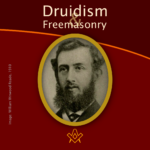 William Winwood Reade was a Scottish philosopher, historian, anthropologist, and explorer born in Crieff, Perthshire, Scotland. The following article by Kenneth Jack, provides some hints that William may have been a Freemason, but there is presently no definitive evidence he was. |
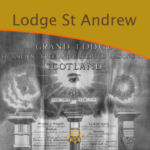 What's in a name? A brief history of the first Scottish Lodge in Australia - By Brother Kenneth C. Jack, Past Master, Lodge St. Andrew, No. 814, Pitlochry |
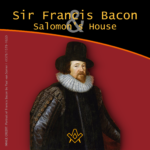 Sir Francis Bacon and Salomon’s House Does Sir Francis Bacon's book "The New Atlantis" indicate that he was a Rosicrucian, and most likely a Freemason too? Article by Kenneth Jack |
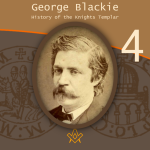 George Blackie – The History of the Knights Templar P.4 The final part in the serialisation of George Blackie's 'History of the Knights Templar and the Sublime Teachings of the Order' transcribed by Kenneth Jack. |
 George Blackie – The History of the Knights Templar P.3 Third part in the serialisation of George Blackie's 'History of the Knights Templar and the Sublime Teachings of the Order' transcribed by Kenneth Jack. |
 George Blackie – The History of the Knights Templar P.2 Second part in the serialisation of George Blackie's 'History of the Knights Templar and the Sublime Teachings of the Order' transcribed by Kenneth Jack. |
 George Blackie – The History of the Knights Templar P.1 First part in the serialisation of George Blackie's History of the Knights Templar and the Sublime Teachings of the Order – by Kenneth Jack |
 Little known as a Freemason, Bro Dr Robert ‘The Bulldog’ Irvine remains a Scottish rugby legend, and his feat of appearing in 10 consecutive international matches against England has only been surpassed once in 140 years by Sandy Carmichael. |
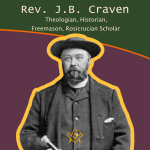 Rev. J.B. Craven: Theologian, Historian, Freemason, And Rosicrucian Scholar Archdeacon James Brown Craven is one of those unsung heroes of Scottish Freemasonry about whom very little has been previously written – here Kenneth Jack explores the life and works of this remarkable esoteric Christian. |
 Discover the powerful family of William Schaw, known as the 'Father of Freemasonry' |
 This month, Kenneth Jack invites us to look at the life of Sir William Peck; - astronomer, Freemason and inventor of the world's first electric car. A truly fascinating life story. |
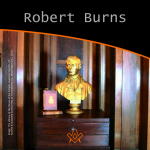 A Tribute to Scotland's Bard – The William Robertson Smith Collection With Burns' Night approaching, we pay tribute to Scotland's most famous Bard – The William Robertson Smith Collection |
 The Joy of Masonic Book Collecting Book purchasing and collecting is a great joy in its own right, but when a little extra something reveals itself on purchase; particularly with regards to older, rarer titles.. |
 Masons, Magus', and Monks of St Giles - who were the Birrell family of Scottish Freemasonry? |
 The 6th Duke of Atholl - Chieftain, Grand Master, and a Memorial to Remember In 1865, why did over 500 Scottish Freemasons climb a hill in Perthshire carrying working tools, corn, oil and wine? Author Kenneth Jack retraces their steps, and reveals all. |
 Charles Mackay: Freemason, Journalist, Writer Kenneth Jack looks at life of Bro Charles Mackay: Freemason, Journalist, Writer, Poet; and Author of ‘Tubal Cain’. |
 A Mother Lodge and a Connection Uncovered, a claim that Sir Robert Moray was the first speculative Freemason to be initiated on English soil. |
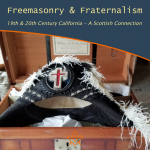 What is it that connects a very old, well-known Crieff family, with a former President of the United States of America? |
 The life of Bro. Cattanach, a theosophist occultist and Scottish Freemason |
 The Mysterious Walled Garden of Edzell Castle Explore the mysterious walled garden steeped in Freemasonry, Rosicrucianism, and Hermeticism. |
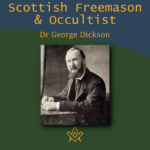 Dr. George Dickson: Scottish Freemason and Occultist Bro. Kenneth explores the life of Dr George Dickson a Scottish Freemason and Occultist |
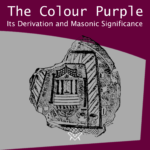 The Colour Purple - Its Derivation and Masonic Significance What is the colour purple with regards to Freemasonry? The colour is certainly significant within the Royal Arch series of degrees being emblematical of Union. |
 Bridging the Mainstream and the Fringe Edward MacBean bridging mainstream Freemasonry with the fringe esoteric branches of Freemasonry |
 Freemasonry in the Works of John Steinbeck We examine Freemasonry in the Works of John Steinbeck |
 Renegade Scottish Freemason - John Crombie Who was John Crombie and why was he a 'renegade'? |
 Scottish Witchcraft And The Third Degree How is Witchcraft connected to the Scottish Third Degree |
Recent Articles: in people series
 Celebrate the extraordinary legacy of The Marquis de La Fayette with C.F. William Maurer's insightful exploration of Lafayette's 1824-25 tour of America. Discover how this revered leader and Freemason was honored by a young nation eager to showcase its growth and pay tribute to a hero of the American Revolution. |
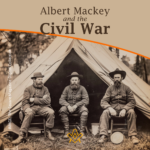 Albert Mackey and the Civil War In the midst of the Civil War's darkness, Dr. Albert G. Mackey, a devoted Freemason, shone a light of brotherhood and peace. Despite the nation's divide, Mackey tirelessly advocated for unity and compassion, embodying Freemasonry's highest ideals—fraternal love and mutual aid. His actions remind us that even in dire times, humanity's best qualities can prevail. |
 Discover the enduring bond of brotherhood at Lodge Dumfries Kilwinning No. 53, Scotland's oldest Masonic lodge with rich historical roots and cultural ties to poet Robert Burns. Experience rituals steeped in tradition, fostering unity and shared values, proving Freemasonry's timeless relevance in bridging cultural and global divides. Embrace the spirit of universal fraternity. |
 Discover the profound connections between John Ruskin's architectural philosophies and Freemasonry's symbolic principles. Delve into a world where craftsmanship, morality, and beauty intertwine, revealing timeless values that transcend individual ideas. Explore how these parallels enrich our understanding of cultural history, urging us to appreciate the deep impacts of architectural symbolism on society’s moral fabric. |
 Discover the incredible tale of the Taxil Hoax: a stunning testament to human gullibility. Unmasked by its mastermind, Leo Taxil, this elaborate scheme shook the world by fusing Freemasonry with diabolical plots, all crafted from lies. Dive into a story of deception that highlights our capacity for belief and the astonishing extents of our credulity. A reminder – question everything. |
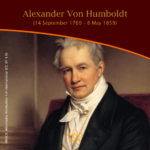 Dive into the extraordinary legacy of Alexander Von Humboldt, an intrepid explorer who defied boundaries to quench his insatiable thirst for knowledge. Embarking on a perilous five-year journey, Humboldt unveiled the Earth’s secrets, laying the foundation for modern conservationism. Discover his timeless impact on science and the spirit of exploration. |
 Voltaire - Freethinker and Freemason Discover the intriguing connection between the Enlightenment genius, Voltaire, and his association with Freemasonry in his final days. Unveil how his initiation into this secretive organization aligned with his lifelong pursuit of knowledge, civil liberties, and societal progress. Explore a captivating facet of Voltaire's remarkable legacy. |
 Robert Burns; But not as we know him A controversial subject but one that needs addressing. Robert Burns has not only been tarred with the presentism brush of being associated with slavery, but more scaldingly accused of being a rapist - a 'Weinstein sex pest' of his age. |
 Richard Parsons, 1st Earl of Rosse Discover the captivating story of Richard Parsons, 1st Earl of Rosse, the First Grand Master of Grand Lodge of Ireland, as we explore his rise to nobility, scandalous affiliations, and lasting legacy in 18th-century Irish history. Uncover the hidden secrets of this influential figure and delve into his intriguing associations and personal life. |
 James Gibbs St. Mary-Le-Strand Church Ricky Pound examines the mysterious carvings etched into the wall at St Mary-Le-Strand Church in the heart of London - are they just stonemasons' marks or a Freemason’s legacy? |
 Freemasonry and the Royal Family In the annals of British history, Freemasonry occupies a distinctive place. This centuries-old society, cloaked in symbolism and known for its masonic rituals, has intertwined with the British Royal Family in fascinating ways. The relationship between Freemasonry and the Royal Family is as complex as it is enduring, a melding of tradition, power, and mystery that continues to captivate the public imagination. |
 A Man Of High Ideals: Kenneth Wilson MA A biography of Kenneth Wilson, his life at Wellington College, and freemasonry in New Zealand by W. Bro Geoff Davies PGD and Rhys Davies |
 In 1786, intending to emigrate to Jamaica, Robert Burns wrote one of his finest poetical pieces – a poignant Farewell to Freemasonry that he wrote for his Brethren of St. James's Lodge, Tarbolton. |
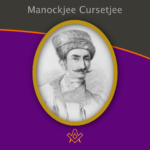 Alex Lishanin explores Mumbai and discovers the story of Lodge Rising Star of Western India and Manockjee Cursetjee – the first Indian to enter the Masonic Brotherhood of India. |
 Aleister Crowley - a very irregular Freemason Aleister Crowley, although made a Freemason in France, held a desire to be recognised as a 'regular' Freemason within the jurisdiction of UGLE – a goal that was never achieved. |
 Sir Joseph Banks – The botanical Freemason Banks was also the first Freemason to set foot in Australia, who was at the time, on a combined Royal Navy & Royal Society scientific expedition to the South Pacific Ocean on HMS Endeavour led by Captain James Cook. |
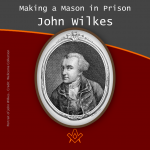 Making a Mason in Prison: the John Wilkes’ exception? |
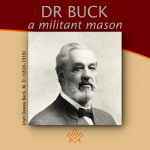 "To be a good man and true" is the first great lesson a man should learn, and over 40 years of being just that in example, Dr Buck won the right to lay down the precept. |
 Elias Ashmole: Masonic Hero or Scheming Chancer? The debate is on! Two eminent Masonic scholars go head to head: Yasha Beresiner proposes that Elias Ashmole was 'a Masonic hero', whereas Robert Lomas posits that Ashmole was a 'scheming chancer'. |
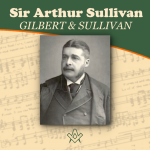 Sir Arthur Sullivan - A Masonic Composer We are all familiar with the comic operas of Gilbert and Sullivan, but did you know Sullivan was a Freemason, lets find out more…. |
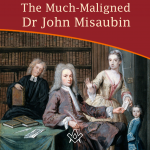 The Much-Maligned Dr John Misaubin The reputation of the Huguenot Freemason, has been buffeted by waves of criticism for the best part of three hundred years. |
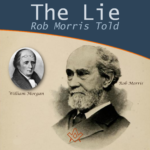 Was William Morgan really murdered by Masons in 1826? And what was the lie Masonic author Rob Morris told? Find out more in the intriguing story of 'The Morgan Affair'. |
 Lived Respected - Died Regretted Lived Respected - Died Regretted: a tribute to HRH The Prince Philip, Duke of Edinburgh |
 Who was Moses Jacob Ezekiel, a Freemason, American Civil War Soldier, renowned sculptor ? |
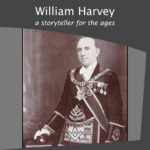 A Masonic author and Provincial Grand Master of Forfarshire in Scotland |
 Who was Philip, Duke of Wharton and was he Freemasonry’s Loose Cannon Ball ? |
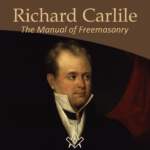 Richard Carlile - The Manual of Freemasonry Will the real author behind The Manual of Freemasonry please stand up! |
 Nicholas Hawksmoor – the ‘Devil’s Architect’ Nicholas Hawksmoor was one of the 18th century’s most prolific architects |
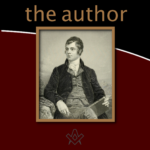 By Bro. Anthony Oneal Haye (1838-1877), Past Poet Laureate, Lodge Canongate Kilwinning No. 2, Edinburgh. |
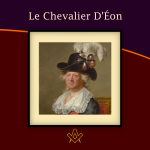 The Curious Case of the Chevalier d’Éon A cross-dressing author, diplomat, soldier and spy, the Le Chevalier D'Éon, a man who passed as a woman, became a legend in his own lifetime. |
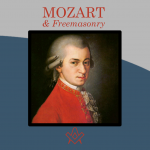 Mozart Freemasonry and The Magic Flute. Rev'd Dr Peter Mullen provides a historical view on the interesting topics |
masonic knowledge
to be a better citizen of the world
share the square with two brothers

click image to open email app on mobile device


